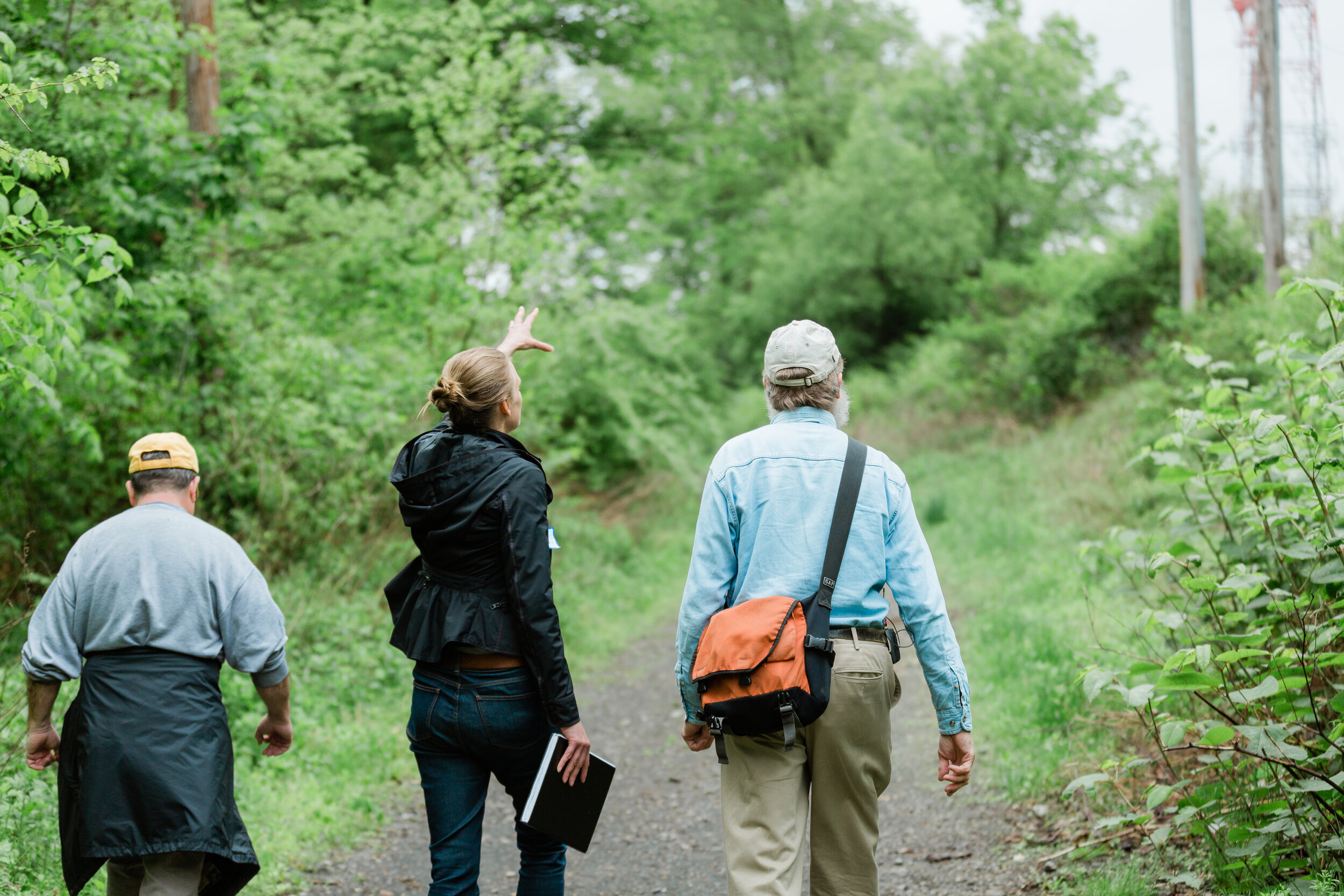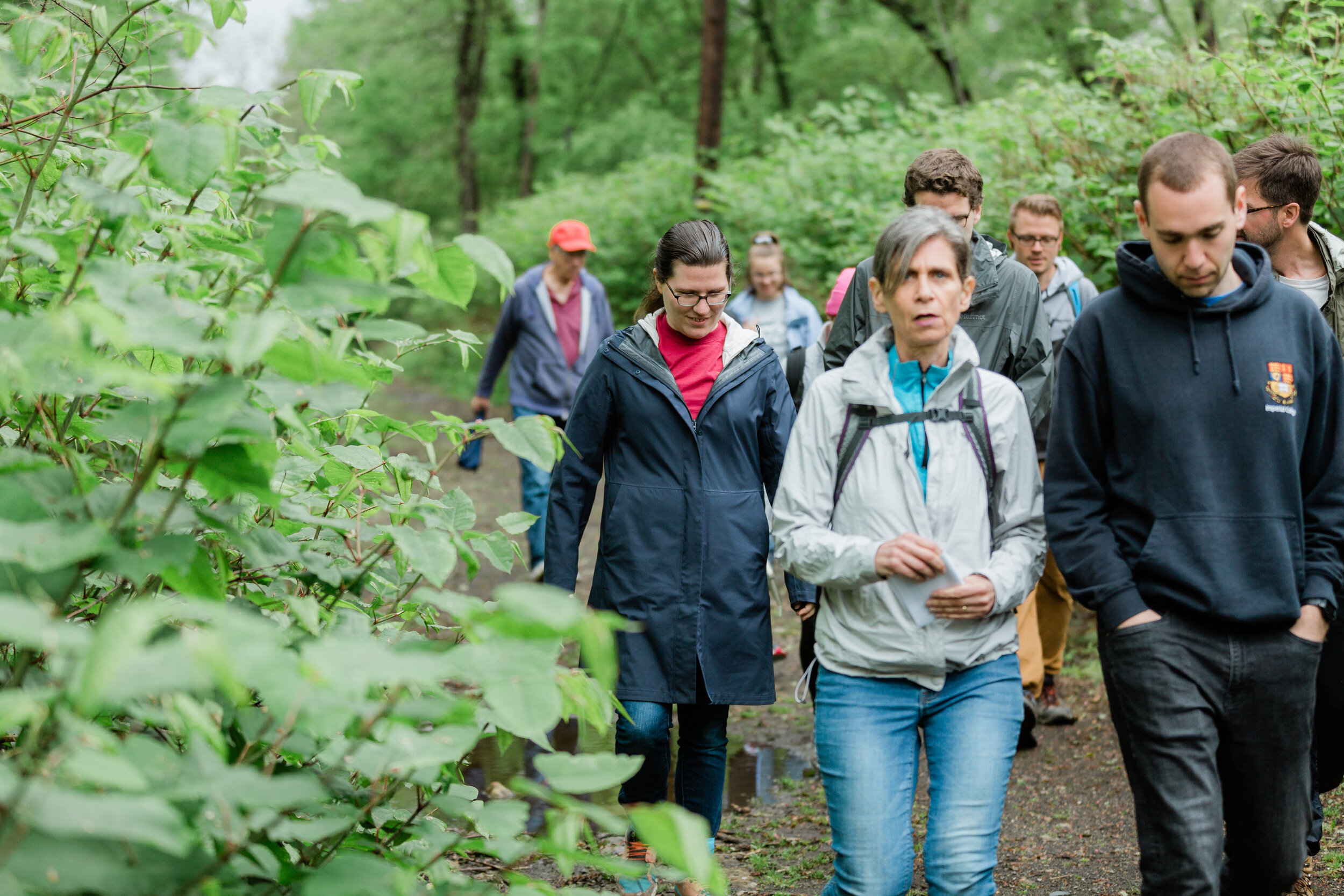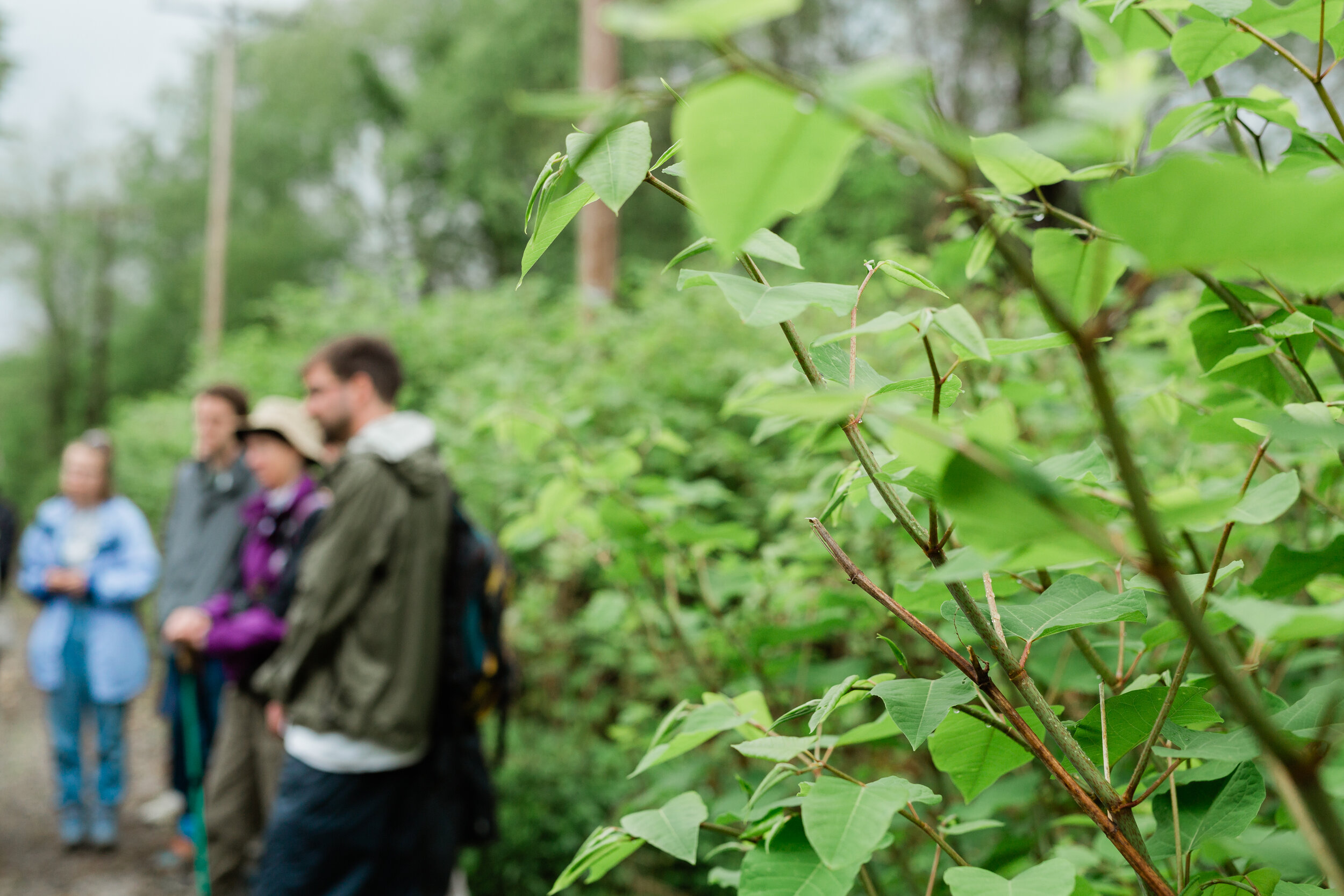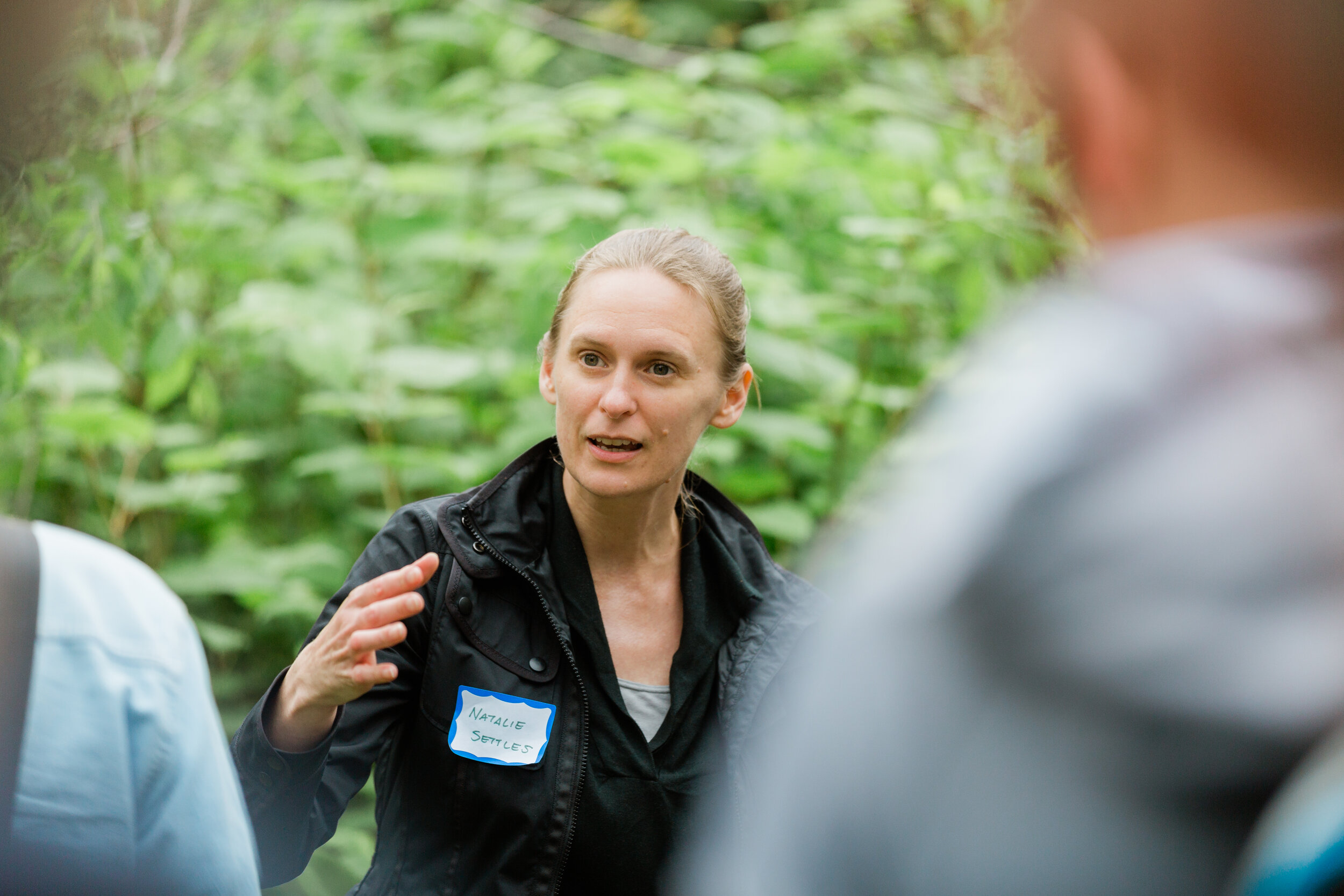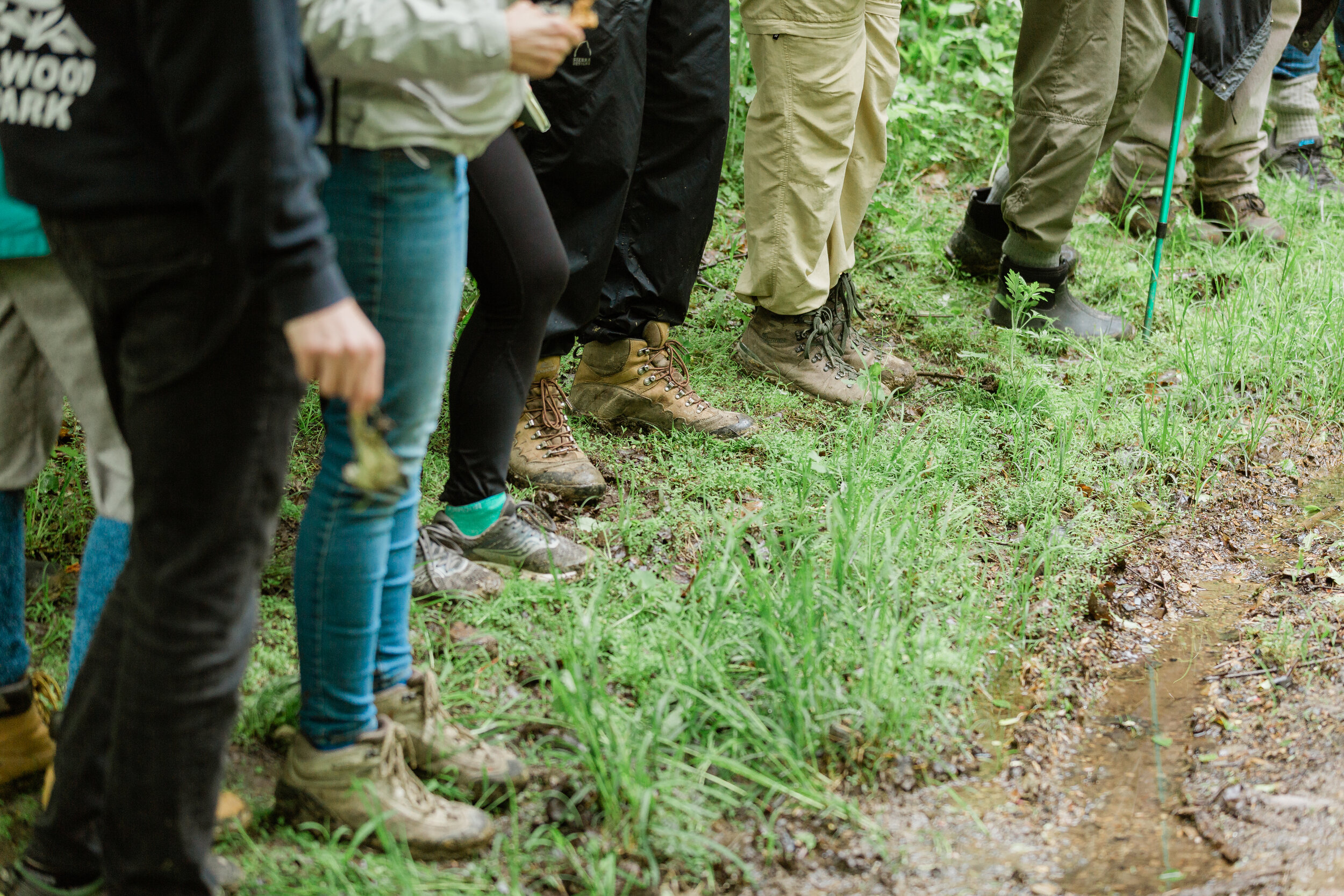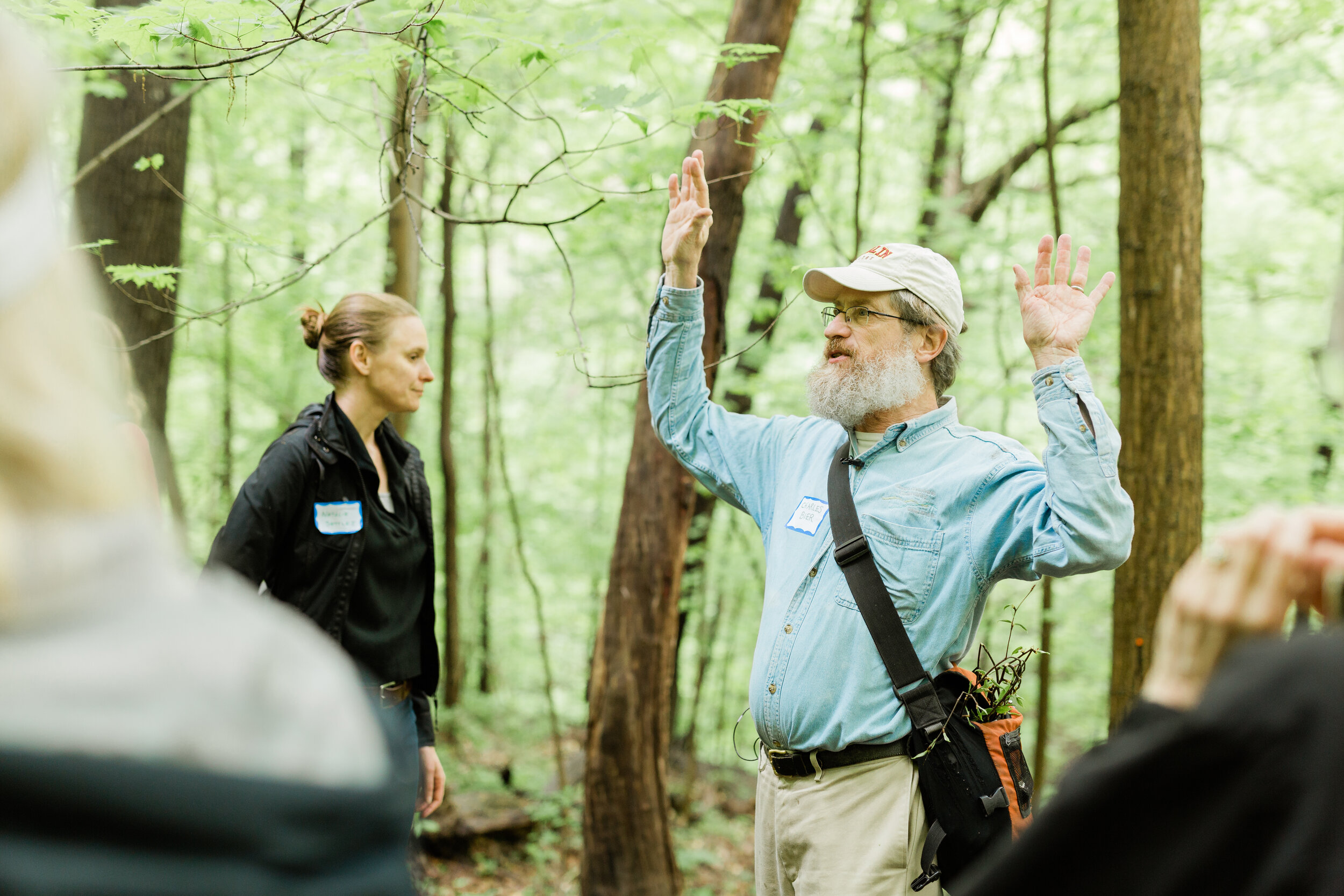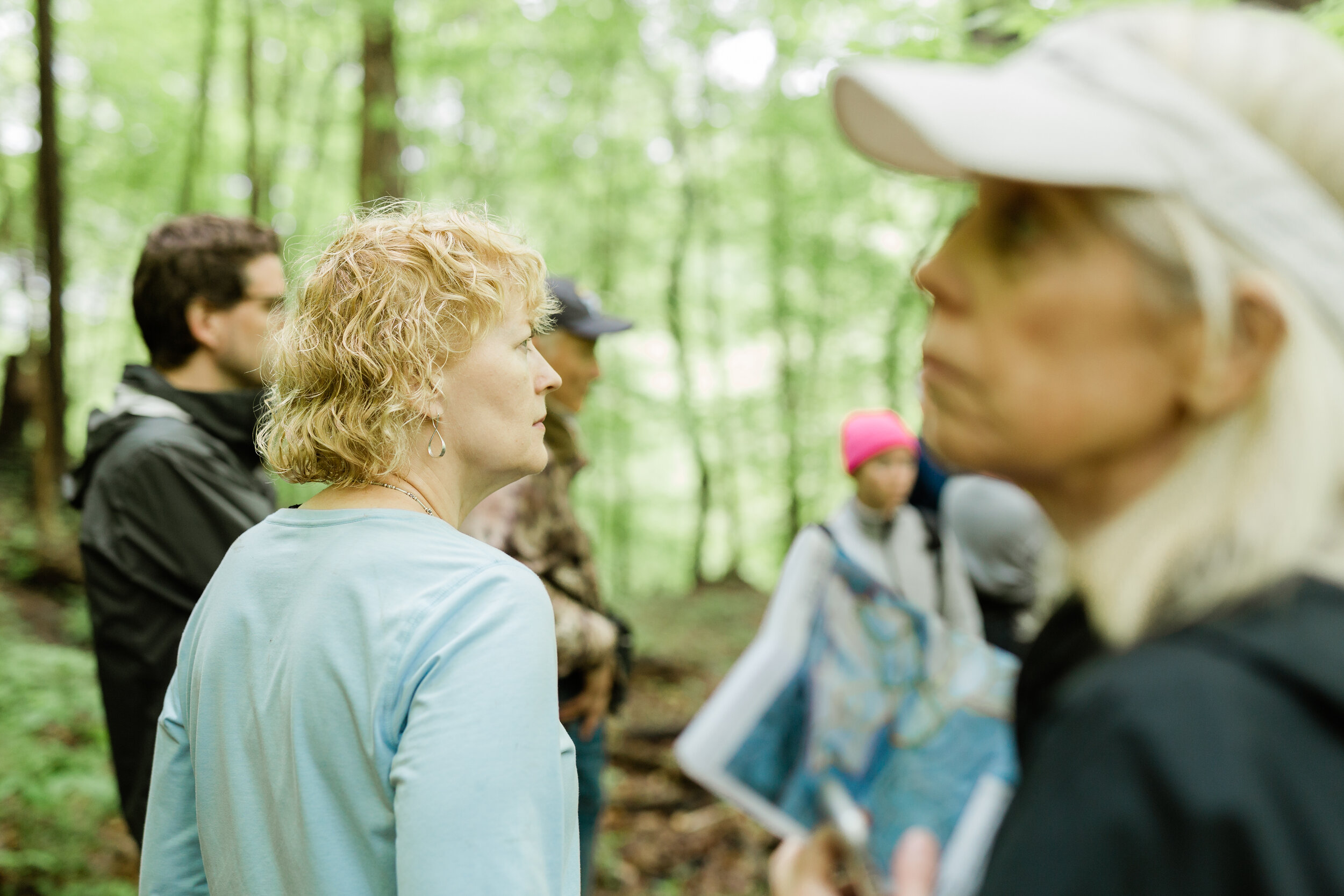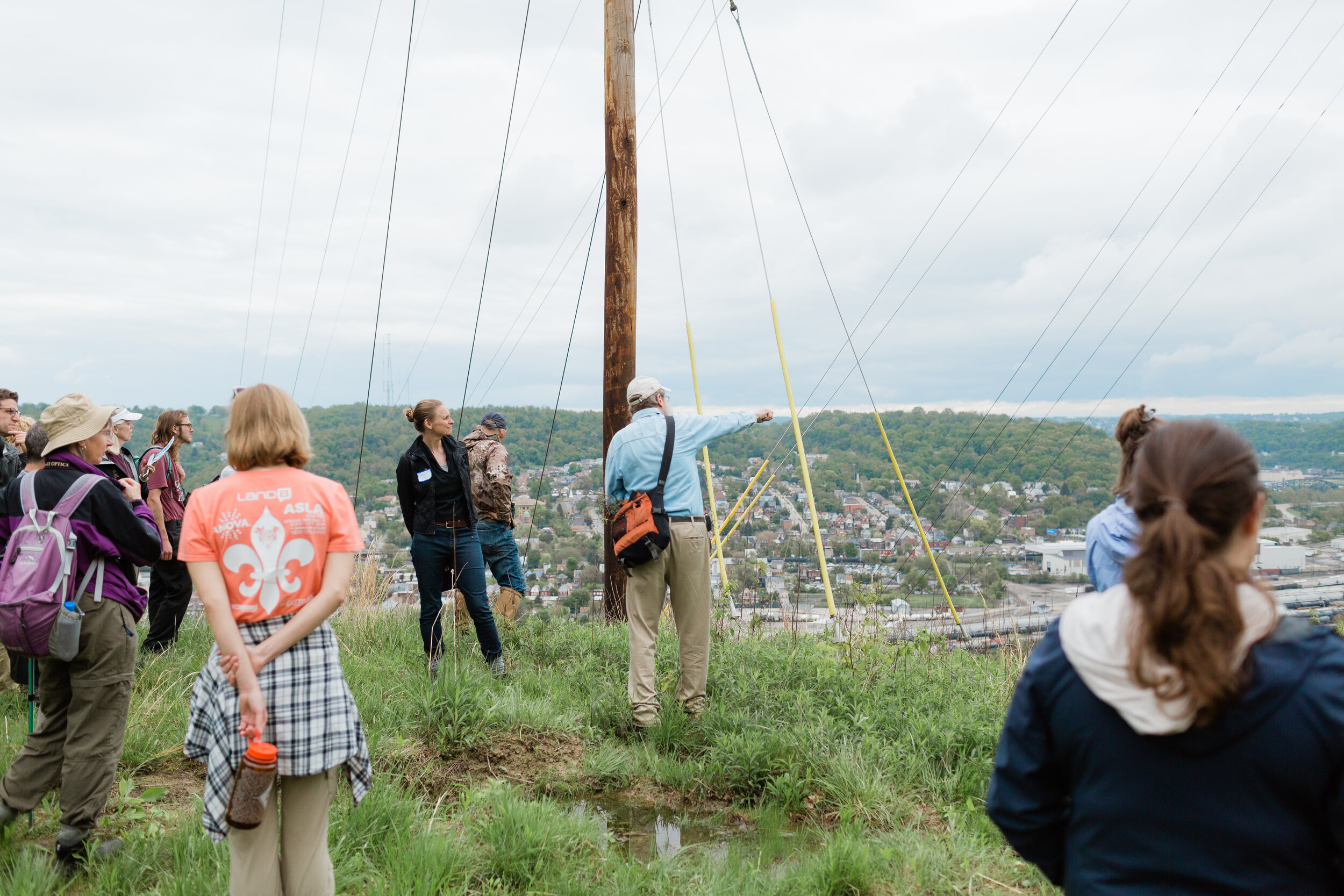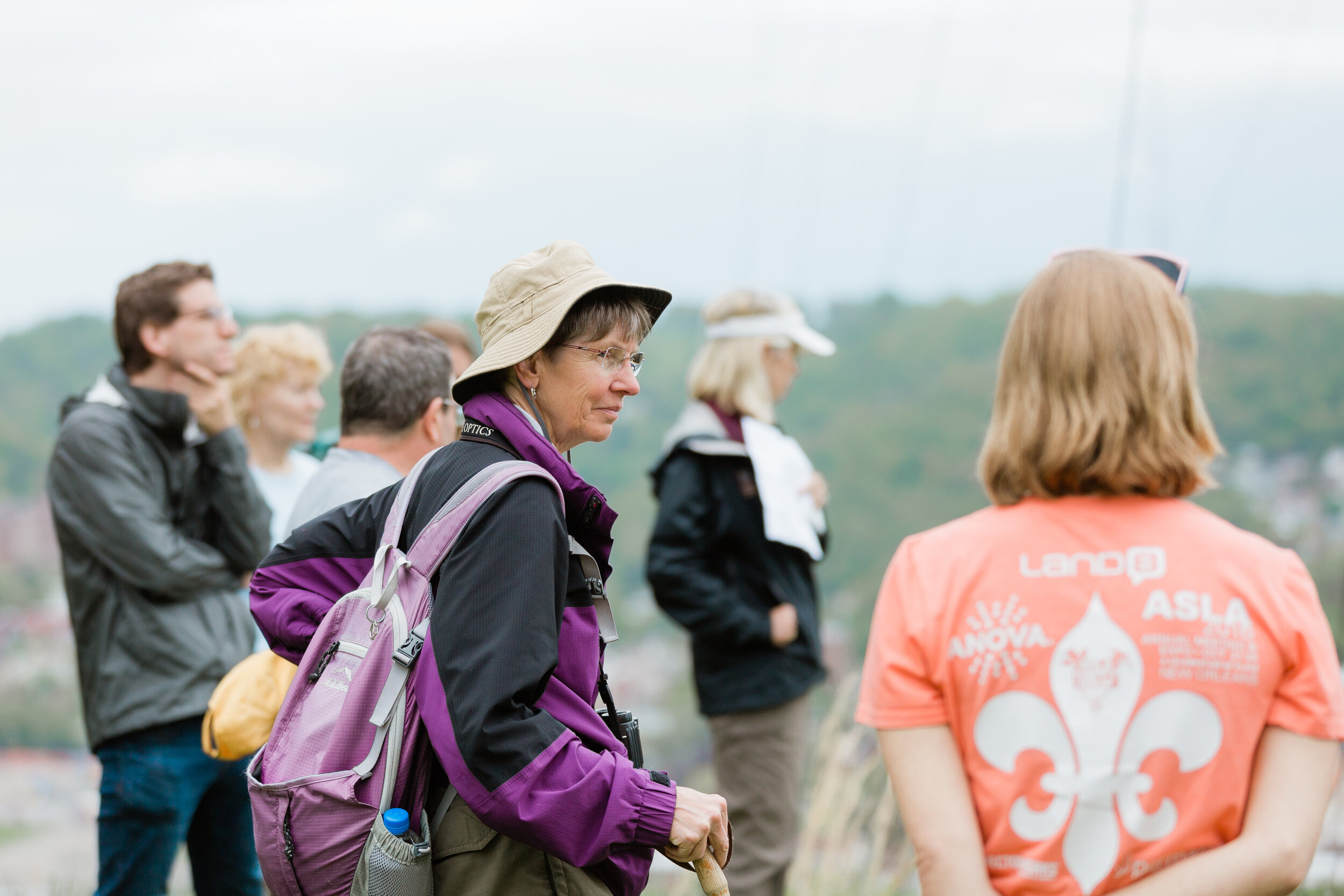WALKING THE URBAN WILDERNESS
Artist Natalie Settles, Biologist Charles Beir, and Landscape Architect Kara Smith explore Hays Wood, a former industrial mining site which has returned to the wild and is soon to become a city park. Natalie Settles writes:
May 5th, 2019, Hays Woods, Pittsburgh
In the studio, my best work frequently arises from honest questions to which I do not know the answers. Hays Woods embodies an unanswered question – how are we to understand our industrial past and natural history and live out the answer to that question in the future? It is a question that we ignore to our peril in our distracted consumer culture. However, if we answer it well through conservation, remediation, and changes to our own lives, places like Hays Woods can embody an answer to the questions posed by the ravaged landscapes surrounding us.
It was a muddy day in Hays Woods, when we began our walk pondering these questions. From youngest to oldest, we gamely slid through the mud and scrambled through the brush to discover puddles full of tadpoles, mine seepage, a swathe of Fire Pink wild flowers, tangles of invasive knot weed, cascades of native may apples, the blight of excavation scars, and amazing urban wilderness vistas.
The materials that graveled the path were dirt and rock and plant matter, but there was also brick, ceramic, coal, and a more recent addition – plastics. As an artist, materials in a work are never arbitrary; they are things I engage thoughtfully. In a place like Hays Woods, the leavings beneath our feet are a patina of this site’s past. While the human detritus of brick, ceramic, and coal are still fairly natural and inert, the plastics of modern society seem out of step with the pace of our world. They are often single use and yet last for millennia. A place like Hays woods is a historical archive and a living question about how we will answer to the materials of our lives.
The best work I make frequently arises from limits – either from necessity or choice. Hays Woods is a place that teaches us about the need for limits on our individual, commercial, and civic lives. Without limits we will continue to surround ourselves with blighted landscapes. Hays Woods shows us the outcome of excesses and asks us how we will choose our limits more wisely.
As we departed from the woods, a woman who had spent many years walking the terrain and advocating for its conservation came up to me. She said, “I have been on many nature walks, but I have never heard or thought about the things you were saying.”
Later, a young artist wrote to say she was earning her degree in art, and this walk had inspired a vision for her future as an artist interested in ecology. Plans for the trails that will wander through Hays Woods when it becomes an accessible public space are just beginning, and it seems her trail is just beginning too.

